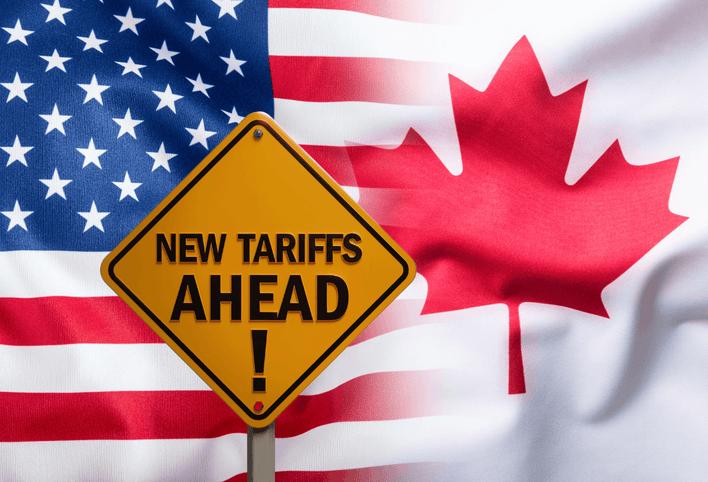How Big Picture Trends are Shaping Local Real Estate

In April 2025, the Canadian housing market is moving through a complex and dynamic landscape—one shaped not only by local supply and demand but also by global trade, monetary policy, and political uncertainty. While the Sunshine Coast feels far removed from Washington and Ottawa, the ripple effects are already reaching our shores.
This spring, a trio of macroeconomic forces—U.S. tariffs, lower interest rates, and the looming federal election—are creating both opportunities and uncertainty. Here’s how they’re intersecting and what they may mean for buyers and sellers right here on the Coast.
📦 Trade Tensions & Rising Costs
Earlier this month, the U.S. announced a new round of tariffs on key imports, including industrial metals, machinery, and manufactured goods—many of which are commonly used in Canadian residential construction. According to a recent Maclean’s article, the impact of these tariffs could raise construction costs by 1% to 4%, depending on a project’s reliance on imported materials.
For Sunshine Coast builders and developers, this could mean higher costs for framing, HVAC systems, fixtures, and even cabinetry—especially if they depend on U.S. or offshore suppliers. While some may absorb the increase temporarily, others may pass costs onto future buyers, potentially nudging new construction and renovation prices upward later in the year.
🗳️ The Election Effect: Uncertainty in the Air
Adding to the complexity is the upcoming federal election, expected later this year. While housing affordability remains a top issue, it’s unclear what direction housing policy will take depending on the outcome. From proposed tax credits to development incentives, each party is bringing a different approach—and that has some buyers and developers taking a wait-and-see stance.
Meanwhile, the Conference Board of Canada’s Consumer Confidence Index dropped by 8.4 points in March, reflecting increased economic pessimism across the country (source). Compounding that, Canada shed 33,000 jobs in March, according to Reuters, marking the first net job loss in over two years.
💰 The Good News? Interest Rates Are Lower Than then Past 2 Years.
To counterbalance growing economic uncertainty and encourage consumer spending, the Bank of Canada lowered its policy rate to 2.75% in March, marking the first rate cut since 2023. According to TD Economics, we could see additional cuts this year, possibly dropping rates to 2.5% or even 2.25% by fall.
These lower rates are already translating into improved affordability for buyers, with many lenders adjusting their fixed and variable mortgage products downward. For those who were priced out or holding off, this environment is opening the door to more favorable borrowing conditions—even as other economic factors introduce caution.
📎 Source: Bank of Canada Rate Announcement – March 12, 2025
✅ The Takeaway
*Tariffs may push construction costs higher—but the effect won’t be immediate.
*Interest rates are falling, offering a window of opportunity for buyers.
*Political uncertainty is putting some pressure on consumer confidence but also may lead to future affordability measures.
*Locally, we’re in a buyer’s market—but well-prepared sellers can still stand out.
*The macroeconomic picture may be complicated, but with the right advice and approach, there are real opportunities to be found on the Coast.
*Interest rates are falling, offering a window of opportunity for buyers.
*Political uncertainty is putting some pressure on consumer confidence but also may lead to future affordability measures.
*Locally, we’re in a buyer’s market—but well-prepared sellers can still stand out.
*The macroeconomic picture may be complicated, but with the right advice and approach, there are real opportunities to be found on the Coast.